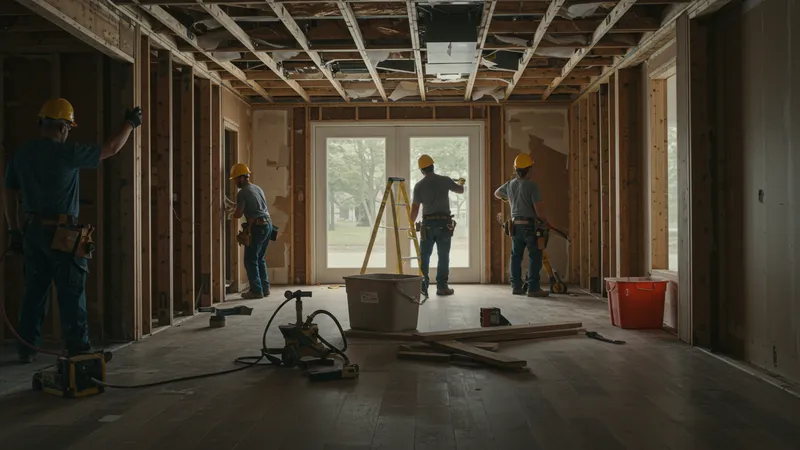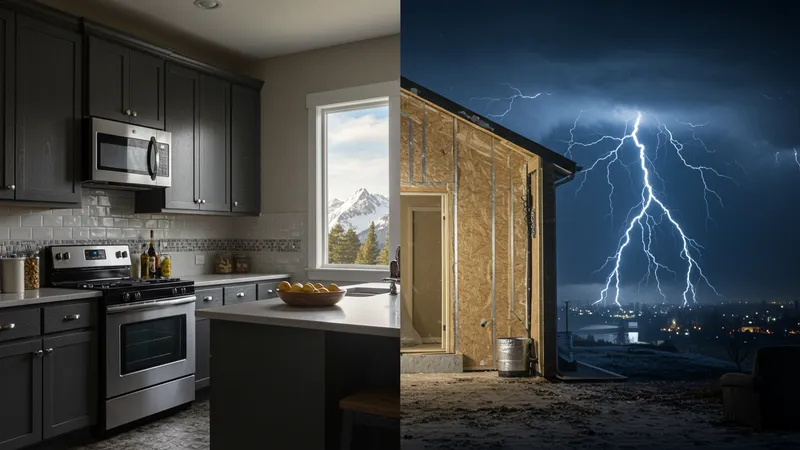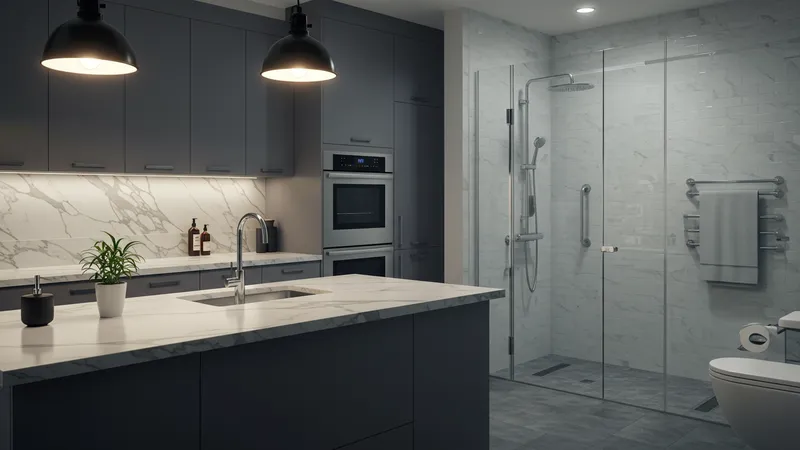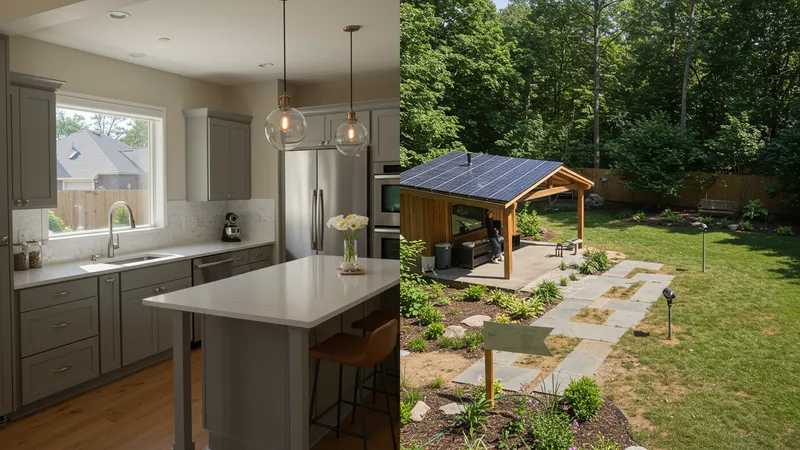

Home improvement services consist of upgrades, repairs, and maintenance offered by professionals to enhance the quality, comfort, and value of residential spaces. The concept behind these services is to allow homeowners to address functional needs, boost property aesthetics, or modernize old spaces, often using specialized skills, tools, and materials. These solutions target everything from structural repair and remodels to aesthetic tweaks tailored to homeowner preferences and regional standards.
In the United States, common home improvement services are shaped by climate considerations, housing trends, and regulatory codes. They span from kitchen and bathroom remodels to roofing, HVAC installations, landscaping, and flooring replacements. Each category offers unique benefits, cost levels, and complexities, making them practical for homeowners seeking to adapt homes to changing needs, increase market value, or comply with local requirements. Understanding what these services include is essential for informed decisions about prioritizing investments and choosing competent professionals.

Kitchen remodeling remains one of the highest-impact services in the United States, often involving updates to cabinetry, countertops, and appliances. With substantial investment required, these projects yield increased functionality and property value—one reason kitchens are consistently targeted by homeowners for extensive upgrades. Costs shift based on material quality and regional labor rates, making budgeting and design flexibility essential.
Bathroom renovations follow closely in demand, offering opportunities to refresh layouts, improve water efficiency, and enhance comfort. This service typically includes new fixtures, tiles, and plumbing improvements. Homeowners prioritize bathrooms not just for daily use, but for substantial return on investment at resale. Opting for sustainable materials or custom features can shift price ranges considerably.
Roof replacement is a critical service in regions with extreme weather. Materials such as asphalt shingles or metal are common choices in the U.S., and professional installation is vital for long-term home protection. The cost includes tear-off, disposal, and new shingles or panels. Recent data shows that a new roof can recoup over 60% of its cost in added home value, making it a strategic investment in home longevity.
Specialty projects—such as landscaping, insulation, or electrical upgrades—play supporting roles in overall comfort and energy efficiency. Landscaping enhances curb appeal, while insulation and electrical work address behind-the-scenes safety and operational needs. Together, these services create well-rounded improvements that satisfy both aesthetic and practical homeowner goals. The deeper details reveal even more valuable insights ahead, including tips for choosing trustworthy professionals and making cost-effective choices for each home improvement service category.
Evaluating the real cost versus the potential value of home improvement services in the United States is crucial for making sound investment decisions. For example, kitchen remodels, while among the most expensive upgrades, consistently result in some of the highest returns, particularly in competitive real estate markets. Conversely, routine services like painting or insulation offer moderate improvements in comfort and efficiency at a lower price point, though their effect on resale value may be less substantial. Understanding these dynamics helps homeowners prioritize projects that align with long-term objectives.

Regional variations heavily influence costs and value perceptions. For instance, homes in colder climates may benefit more from insulation upgrades or window replacements, while properties in storm-prone areas might prioritize roof repairs or replacements. The average cost for major remodels can differ significantly depending on access to materials, labor markets, and local permitting. This complexity means research and local consultation are often necessary steps before beginning large-scale changes.
The return on investment (ROI) for common services is frequently tracked by real estate agencies and remodeling industry reports. According to recent studies, projects like bathroom renovations recoup around 60–70% of their upfront cost, while landscaping has demonstrated boosts in perceived property value, making even minor improvements worthwhile. Such statistics guide homeowners toward options likely to produce enduring benefits over time.
Professional expertise cannot be overlooked when discussing cost and value. Reputable contractors ensure code compliance, material quality, and strategic designs tailored to homeowner needs. Whether tackling an electrical upgrade or custom flooring installation, working with trusted professionals limits project delays and costly mistakes—results that directly impact the overall value derived from any home improvement investment.
Each core home improvement service encompasses a distinct set of features designed to address specific homeowner needs. In kitchen remodeling, the focus typically extends from new cabinetry and counter surfaces to upgraded appliances and custom lighting. Leading U.S. providers may also incorporate open-concept layouts, energy-efficient fixtures, and smart technology integrations as part of standard project scopes, adding significant day-to-day convenience.

Bathroom renovation often includes advanced plumbing solutions, space-saving storage, and accessibility elements such as walk-in showers or grab bars. Water-saving fixtures and heated flooring are popular options across the country, providing both comfort and cost savings. These upgrades not only modernize the space but anticipate the needs of aging residents or those wishing to increase universal accessibility in their home design.
Roof replacement projects involve a careful assessment of structural integrity, drainage systems, and regional weather exposure. Services typically feature removal of the existing roof, repair of any moisture damage, and installation of new weatherproof materials. Many U.S. homeowners opt for impact-resistant shingles or cool roofing solutions to better manage temperature regulation and withstand natural elements more effectively.
Landscaping and outdoor enhancements cover both aesthetic and practical elements, such as lawn installation, retention wall construction, and the placement of native plant species for water efficiency. Expert landscapers in the United States often design with local climates in mind, ensuring sustainability and easy maintenance for homeowners looking to achieve a balanced blend of curb appeal and low operating costs.
Navigating the home improvement landscape in the United States requires attention to formal licensing and insurance requirements. Many states mandate specific credentials for contractors, especially for services involving electrical, plumbing, or structural work. This ensures only qualified professionals undertake projects that could otherwise pose safety risks. Homeowners should verify contractor documentation before starting any kitchen remodel, roof replacement, or electrical upgrade to avoid potential liabilities.

Insurance plays a key role in safeguarding both the homeowner and service providers. General liability and workers’ compensation coverage protect against accidental damage or injuries that may occur on the job site. Verifiable insurance is essential, particularly for higher-risk projects such as window replacement or bathroom renovations. Most reputable companies provide policy details upfront, ensuring transparency and trust throughout the process.
Professional standards extend beyond paperwork, encompassing adherence to building codes, attention to material quality, and transparent communication about project timelines and expectations. Industry certifications, such as those from the National Association of Home Builders or local remodeling guilds, signal a commitment to best practices. Selecting professionals with these credentials helps ensure successful project outcomes and reduces long-term risks for homeowners.
The presence of strong standards and regulations across the U.S. home improvement industry has fostered a culture of accountability and quality workmanship. Homeowners who prioritize these elements during contractor selection are more likely to receive work that is both safe and designed to maximize value, with fewer unpleasant surprises as projects unfold.
Recent trends in U.S. home improvement services reflect changing lifestyles, environmental priorities, and technological advancements. Smart home integrations are now a common feature of kitchen and bathroom remodels, with Wi-Fi-enabled lighting, touchless faucets, and voice-controlled appliances entering the mainstream. These upgrades often increase not only convenience but also energy efficiency, aligning with both modern preferences and evolving code requirements.

Sustainable materials and designs command increasing interest, particularly in flooring and roofing services. Options such as recycled wood or composite shingles offer durability with reduced environmental impact, while low-VOC paints and solar-reflective roofs address both wellness and cost-consciousness. Landscaping innovations, including drought-tolerant garden plans and efficient irrigation systems, help homeowners respond to water scarcity in certain regions without sacrificing outdoor beauty.
Demographic changes and remote work have reshaped priorities for many U.S. homeowners. Greater demand for multipurpose rooms, dedicated workspaces, and flexible layouts has led to corresponding shifts in renovation strategies, especially for kitchen and flooring upgrades. Service providers now offer more customizable project plans that allow residents to adapt homes to changing needs without major structural changes.
Looking ahead, transparency and digitization will further influence the home improvement services market. Online project management tools, remote consultations, and digital design previews are increasingly accessible, giving consumers more control and confidence over their renovation journey. Staying informed about these developments allows homeowners to fully leverage the possibilities offered by today’s most respected home improvement services.